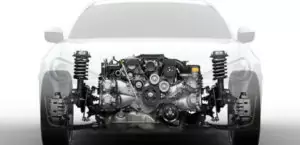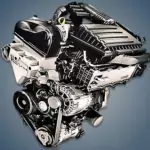The 1.5-liter Mini Cooper B38A15A turbo engine has been assembled at the company’s factory since 2014 and is installed on all third-generation Mini models, but only in basic versions. This 3-cylinder engine was essentially one of the varieties of the BMW B38 series units.
B38/B48-series engines: B38A12A, B38A15A, B48A20A, B48A20B.
Specifications
| Production years | since 2014 |
| Displacement, cc | 1499 |
| Fuel system | direct injection |
| Power output, hp | 75 (One First) 102 (One) 136 (Cooper) |
| Torque output, Nm | 160 (One First) 190 (One) 220 (Cooper) |
| Cylinder block | aluminum R3 |
| Block head | aluminum 12v |
| Cylinder bore, mm | 82 |
| Piston stroke, mm | 94.6 |
| Compression ratio | 11.0 |
| Features | Valvetronic |
| Hydraulic lifters | yes |
| Timing drive | chain |
| Phase regulator | on both shafts |
| Turbocharging | Continental 7633795 |
| Recommended engine oil | 5W-30 |
| Engine oil capacity, liter | 4.25 |
| Fuel type | petrol |
| Euro standards | EURO 6 |
| Fuel consumption, L/100 km (for Mini Cooper 2018) — city — highway — combined |
6.1 4.2 4.9 |
| Engine lifespan, km | ~270 000 |
The engine was installed on:
- Mini Cabrio 3 (F57) since 2016;
- Mini Clubman 2 (F54) since 2015;
- Mini Countryman 2 (F60) since 2017;
- Mini Hatch F55 since 2014;
- Mini Hatch 3 (F56) since 2014.
Disadvantages of the Mini B38A15A engine
- So far, most of the complaints are related to direct injection failures and valve deposits;
- The weak point of this motor is the thermal module, which is instead of a thermostat;
- The Valvetronic system, as well as the Vanos phase regulators, regularly throws up problems;
- Sometimes there is a destruction of the thrust bearing due to axial play of the crankshaft.






